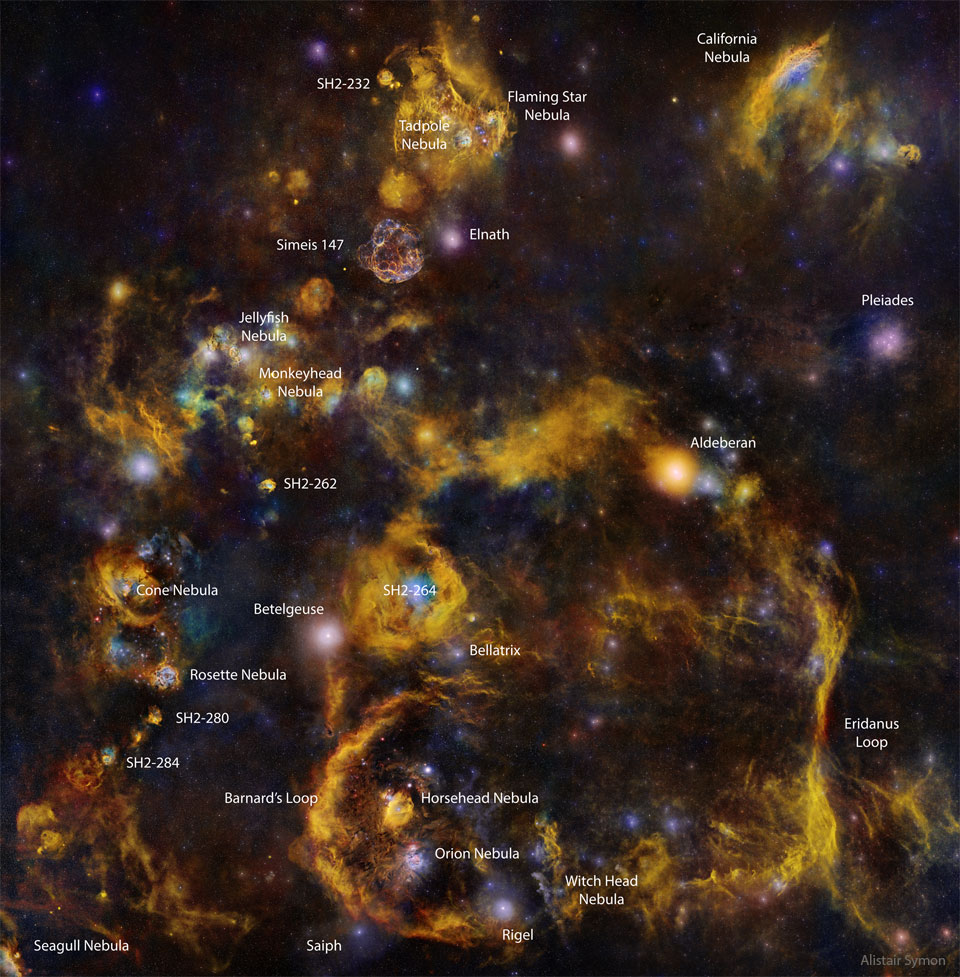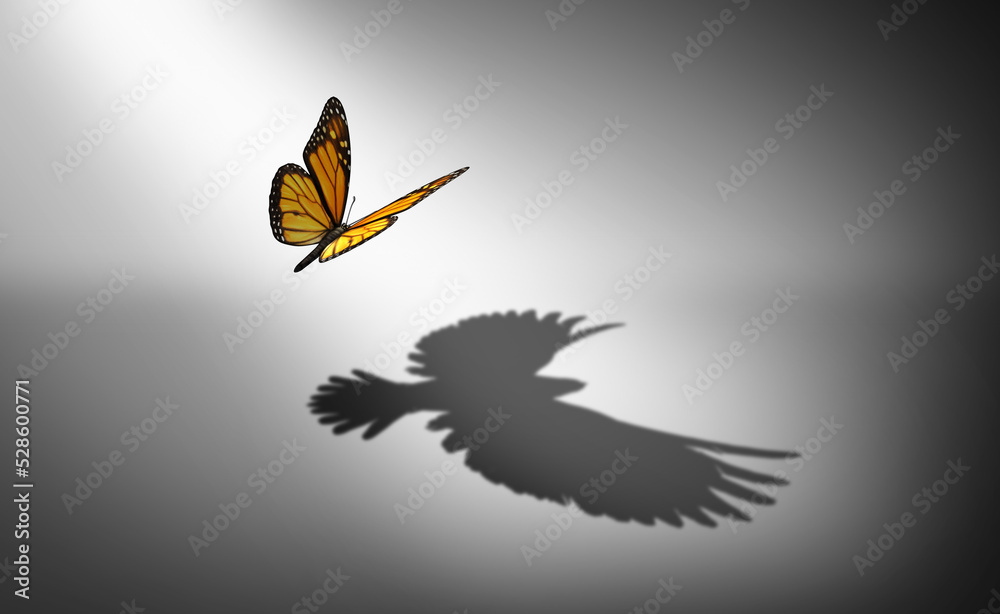 Deep Nebulas: From Seagull to California
Deep Nebulas: From Seagull to CaliforniaExplanation: How well do you know the night sky? OK, but how well can you identify famous sky objects in a very deep image? Either way, here is a test: see if you can find some well-known night-sky icons in a deep image filled with faint nebulosity. This image contains the Pleiades star cluster, Barnard's Loop, Horsehead Nebula, Orion Nebula, Rosette Nebula, Cone Nebula, Rigel, Jellyfish Nebula, Monkey Head Nebula, Flaming Star Nebula, Tadpole Nebula, Aldebaran, Simeis 147, Seagull Nebula and the California Nebula. To find their real locations, here is an annotated image version. The reason this task might be difficult is similar to the reason it is initially hard to identify familiar constellations in a very dark sky: the tapestry of our night sky has an extremely deep hidden complexity. The featured composite reveals some of this complexity in a mosaic of 28 images taken over 800 hours from dark skies over Arizona, USA.
| << Previous APOD | This Day in APOD | Next APOD >> |









